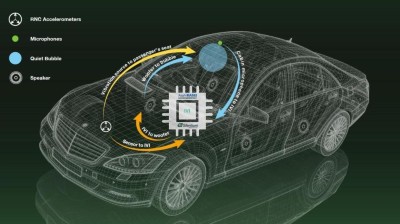The problem mainly occurs with electric cars: loud road noise inside the car. To increase interior comfort, AKM and Silentium have developed technology to effectively suppress road noise.
Silentium’s Quiet Bubble software technology will be integrated into AKM’s audio speech processors and will be introduced worldwide.
Asahi is cruel
Asahi Kasei Microdevices (AKM) has signed a licensing agreement with the Israeli company Silentium for Active Road Noise Cancellation (ARNC) in cars. Silentium’s Quiet Bubble software technology will be integrated into AKM’s audio speech processors and introduced worldwide. Samples are scheduled for delivery in the last quarter of 2022. ARNC technology is designed to reduce road noise in milliseconds, ensuring a comfortable driving experience for vehicle occupants.
With their technology, the two companies mainly target hybrid vehicles and battery electric vehicles, where road noise is particularly prominent in the car’s interior. “There is a much-increasing concern among electric vehicle customers about how unpleasant road noise is perceived inside a vehicle compared to an internal combustion engine. This problem will only increase if there are more self-driving cars on the road in the near future,” comments Naoyuki Kurita. , Chief Marketing Officer at AKM.
Additional reductions in latency through nearby speakers
This collaboration combines AKM’s expertise in low-latency hardware components and Silentium’s knowledge in noise cancellation software for ARNC technology. The solution offered by the two companies aims to optimize the path of the control signal from reference sensors to the amplifiers to achieve high-speed transmission of vehicle signals and low-latency algorithm processing. It does this by optimizing certain components of the AKM’s analog-to-digital converter (ADC) so that measured vehicle signals are quickly forwarded to the company’s digital signal processor (DSP), which includes Silentium’s low-latency Quiet Bubble software.
Additional reductions in latency can be achieved from the audio side of the vehicle by using speakers located close to the headrest or in other locations close to the occupant’s head. Because all hardware, software, and acoustics are made up of low-latency paths, this solution delivers extensive in-car noise-canceling performance “comparable to premium noise-cancelling headphones.”

“Certified tv guru. Reader. Professional writer. Avid introvert. Extreme pop culture buff.”







More Stories
Samsung Quantum Dot TV: Art meets technology
Pitch: €56m for energy startup Reverion
Plastoplan: Plastics for Energy Transition